NC budget & Tax Center releases analysis of new poverty data
NC budget & Tax Center releases analysis of new poverty data
North Carolina’s poverty rate declined but median household income hasn’t kept up with rising prices
Note: The NC Budget & Tax Center will be adding charts and graphics to this page throughout the day.
Poverty statistics released today show the continued importance of policy choices that boost household incomes and focus on addressing hardship in North Carolina.
North Carolina’s poverty rate declined from 13.4 percent in 2021 to 12.8 percent in 2022 . While this was a statistically significant decline, still too many people in North Carolina are living in poverty.
“To seize the momentum of NC’s poverty rate decline, policymakers must shift their focus from cutting taxes for the wealthy and profitable corporations to the work of passing proven policies that fight poverty and make life better and more affordable for more North Carolinians,” said Alexandra Sirota, Executive Director of the nonpartisan nonprofit NC Budget & Tax Center.
These findings come from preliminary analysis by the NC Budget & Tax Center of new data on poverty, income, and health coverage in 2022, released this week by the U.S. Census Bureau.
Less complete poverty data point shows child poverty remaining flat in NC, but that’s not the whole picture.
The expanded federal Child Tax Credit was responsible for a major portion of the record reduction in child poverty in 2021 across the country, lifting 2.1 million kids out of poverty. Congress’s decision to let it expire at the end of 2021 is a major contributor to increase in national poverty levels in 2022 according to the Supplemental Poverty Measure (SPM). Had Congress continued the American Rescue Plan’s Child Tax Credit increase in 2022, about 3 million fewer children would have experienced poverty in 2022— preventing more than half of this year’s increase.
“The expansion of the federal Child Tax Credit in 2021 was responsible for a record drop in child poverty,” said Heba Atwa, Advocacy & Partner Manager at the NC Budget & Tax Center. “The boost in income the CTC provides a family improves health, education, and well-being outcomes that start in childhood and continue for decades beyond.”
The poverty rate for children in North Carolina is 17.2 percent and is statistically unchanged from 2021, according to the Census Bureau’s Official Poverty Measure (OPM), but that’s only a partial picture of hardship in the state. The OPM doesn’t account for important factors like the cost of living, essential expenses, regional differences or — most critically — the seismic changes in tax and social safety net policies in 2022, when proven pandemic relief programs were allowed to lapse.
For that reason, researchers suggest using the Supplemental Poverty Measure (SPM), which paints a more comprehensive picture. The less complete OPM shows poverty remaining flat nationally — such as in North Carolina’s child poverty rate — while the SPM reveals poverty’s sharpest increase in more than 50 years.
The Supplemental Poverty Measure is not available on an annual basis at the state level.
In North Carolina, another factor may be that there was a pretty significant push by community-based organizations, state agencies and Volunteer Income Tax Assistance providers to make sure that those who were eligible but hadn’t received Child Tax Credit payments in 2021 claimed them in 2022, which resulted in many NC families receiving the benefits in 2022.
“The new data show that there are still too many people living in poverty in North Carolina, including way too many children, and household incomes are stagnating. In the face of rising costs for the basics and continued economic uncertainty, last year’s data points to the focus that policymakers at every level of government must bring to addressing the hardship that families face,” said Sirota. “It is not enough to hope that the economy will deliver better outcomes; policymakers can and must make the reduction of hardship for all people the top priority. That is the true measure of economic success.”
Additional North Carolina figures from the U.S. Census Bureau 2022 data include:
- Median household income in North Carolina was $67,482 in 2022, statistically unchanged from 2021. Given rising prices for goods and services, the lack of growth in household income means many households are falling behind.
- Poverty rates continued to be higher for North Carolinians who are Black (18.7 percent), Hispanic or Latino (20.7 percent), and American Indian and Alaska Native (22.4 percent). The poverty rate for North Carolinians who are white alone was 9.6 percent. Given the barriers to economic opportunity and the failure of existing economic rules to narrow these differences, focus should be given to policies and investments that make targeted investments in communities of color, which will benefit all North Carolinians.
- There was a statistically significant increase in the poverty rate for North Carolinians 65 years or older from 10.2 to 10.9 percent. Given the growing aging population in North Carolina, the rise in poverty rates point to the need for targeted investments to address what could be a trend in communities.
- North Carolina saw a statistically significant decline in the number of people with no health insurance in North Carolina from 10.4in 2021 to 9.3 percent in 2022. However, given the coverage loss underway this year after Congress allowed Medicaid coverage protection to expire in April and the continued inaction on Medicaid expansion, the declines in the state’s uninsured could be reversed.
The national trends noted in Tuesday’s release point to important policy actions that have impacted North Carolina and should inform state and local policymakers in building a state where every person can thrive.
“The challenge for North Carolina lawmakers is to demonstrate a commitment to tackle persistent hardship facing families and boost the incomes of households at the median,” said Sirota. “The new data show some of the benefits of robust governmental intervention in a moment of crisis. The question now is whether policy makers at the state and federal apply that lesson to how we make it possible for all people in our state to live free of hardship and full of opportunity.”
How these numbers relate to current NC policy news
First, states that expanded Medicaid have far lower uninsured rate. The delays in implementation of Medicaid expansion due to the lack of a final budget jeopardize the additional benefits that North Carolina could realize with fewer people uninsured. With access to affordable health care, people will have access to life-saving and preventive care, as well as supports for healthier outcomes that lead to a host of social and economic benefits.
Second, the historic increase nationally in the child poverty rate by 7.2 percentage points contrasts sharply with prior progress and points to the opportunity states have to focus on children’s well-being with the tools they have available. This year, states across the country have created or expanded state level Child Tax Credits, North Carolina can and should do the same.
“Allowing our kids to continue to live in poverty is a policy choice. North Carolina could support poverty-busting programs like a state-level CTC, so kids who otherwise wouldn’t wake up to nutritious breakfast, have what they need to learn in school, and go home to housing that is stable. When our leaders don’t act, real kids suffer.””
Additional Resources
- U.S. Census Bureau Press Release, Sept. 14, 2023
- Center on Budget & Policy Priorities, Analyzing the Census Bureau’s Poverty, Income and Health Insurance data, Sept. 12, 2023
- Center on Budget & Policy Priorities, Record Rise in Poverty Highlights Importance of Child Tax Credit; Health Coverage Marks a High Point Before Pandemic Safeguards Ended
- US Census Bureau latest data releases
- U.S. Census Bureau Press Release, Sept. 12, 2023
ABOUT NC BUDGET & TAX CENTER: The NC Budget & Tax Center is a non-partisan, nonprofit organization that documents fiscal and economic conditions in communities to support the work of people, organizations, and government to advance solutions to poverty and pursue racial equity.
Contact: Alexandra Sirota, Executive Director of the NC Budget & Tax Center, [email protected], or Mel Umbarger, Communications & Technology Manager, [email protected]


